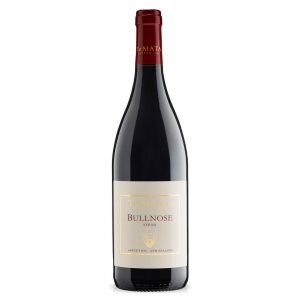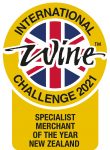No products in the cart.
Dandelion Vineyard 'Lioness of McLaren Vale Shiraz' 2018
2018
£17.00
Availability: 86 in stock
Deep purple with hints of violet on the edges. This wine has aromas of cocoa, boysenberry, blackberry, wild strawberries, cherry and white chocolate. On the palate, the dry tannins and refreshing acidity support the blackberry, plum and wild raspberry fruit flavours.
Why we love it: This lioness was badass enough to bag herself a Bronze Decanter Wine Award 2021!
Drink with: A delicious charcuterie board
TECH
Country
Sub-Region
McLaren Vale
Vintage
2018
Blend Info.
100% Syrah/Shiraz
Alcohol by Vol.
14.5%
Bottle Vol.
750ml
Serving Temp.
12-15°
Closure
Screwcap
Drink
Now - 2024
WINE PRODUCER
In 1852, Joseph Osborn was born in Cornwall, thereafter emigrating to South Australia with his parents. In 1881, he began working for Thomas Hardy Limited, a wine merchant, despite being a teetotaller. Due to a secret endeavour racing horses under a fake name, Joseph was able to amass a small fortune, and in 1912 he planted eight acres of shiraz vines at his property.
The Family
His son, Frank, returned to the land after failing to obtain a medical degree due to ill health, and Joseph sold his horses in order to purchase a property in McLaren Vale, named Bundarra. Frank married Helena d’Arenberg in 1920, and he was encouraged to build a winery in order to use the grapes to make their own wine, and Frank thus learnt all about winemaking.
Dandelion’s First Vintage
Frank’s first vintage included a red table wine and a port, both of which were exported due to the higher prices obtained. Frank’s son Francis, known as d’Arry, took over the business when his father became too ill to crush the grapes, and in 1959 he started his own label, d’Arenberg. Chester Osborn, a fourth generation family member and d’Arry’s son, took over as chief winemaker in 1984, after studying in South Australia and embarking on a wine tour of Europe.
The range of d’Arenberg is as diverse as their story is long, with more than 60 wines produced, from a premium Extra Rare tawny port to a cheap and easy-drinking shiraz. The wines are made from a large number of estate and leased vineyards, with all of them certified for organic and biodynamic processes.
Wines Variety
While a large number of the wines are made from shiraz (a specialty of the McLaren Vale region), many other grapes are used, such as cabernet sauvignon, grenache, pinot noir, cinsault, riesling and chardonnay. Each wine features a name with a story, such as Stump Jump (a type of plough), The Dead Arm (a fungal disease affecting grape vines), and the mouthful, The Athazagoraphobic Cat (who was afraid of being forgotten).
If you’re lucky enough to get to McLaren Vale, the winery now features the d’Arenberg Cube, a five-storey, cube-shaped building featuring a sensory room, virtual fermenter and a 360-degree video room. In the meantime however, you can enjoy many of their splendid drops.
For further information on D’Arenberg and their wines you can visit their website here.
A behemoth of a state, South Australia is responsible for over 50% of Australia’s wine production. With the first known planting here taking place in 1836, local vintners have had time to truly perfect their art. In fact, SA is also home to some of the oldest Shiraz vines on the planet, with around 38% of SA’s old vines being Shiraz.
Such a large area means that the terrain, climate and soil profiles vary immensely between regions, allowing for a vast array of varieties to thrive. Some of South Australia’s premier wine regions include; Barossa Valley, Mclaren Vale, Clare Valley, Coonawarra and the Adelaide hills. Such a collection of prime wine regions has earned South Australia the grand title of Australia’s Wine Capital. But it doesn’t stop there, the prowess of SA wine producers mixed with fantastic growing conditions has garnered the state the privilege of being dubbed one of the 9 Great Wine Capitals of the World.
Towards the end of the 19th century, Europe was ravaged by an outbreak of Phylloxera, an aphid that injects a venom into the root of the vine while sucking out sap. The effect of the outbreak vastly influenced the global market. For example, France’s wine output decreased by over 40%, with the whole ordeal costing the country over 10 billion francs. Luckily for all, the grand ‘down-under’ remained a wine wonder, as the blight couldn’t take flight and reach the far away lands.
OTHER WINES YOU MIGHT LIKE
You may also like…
- £24.00 Add to cart
- £29.00 Add to cart
- £15.50 Add to cart
- £45.50 Add to cart














